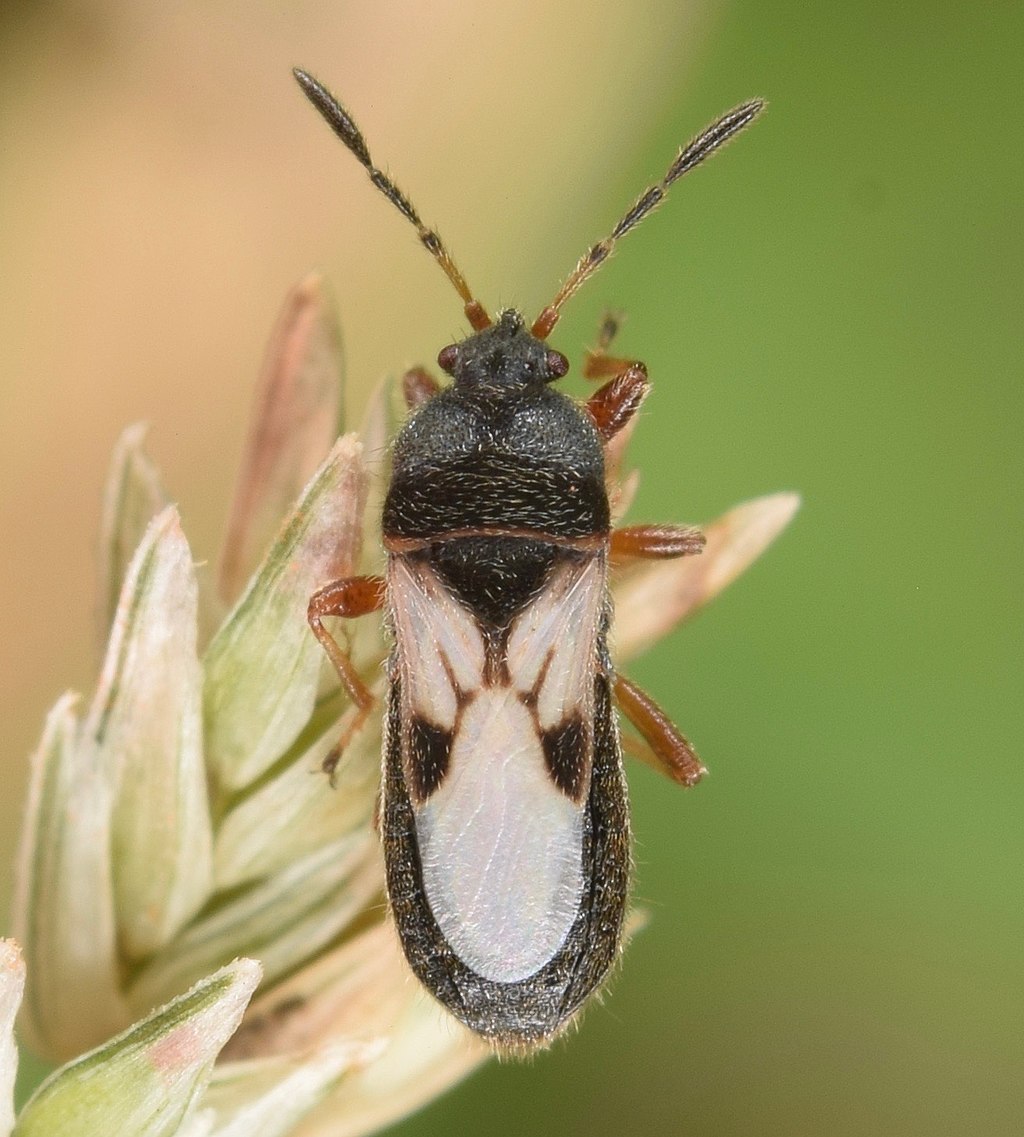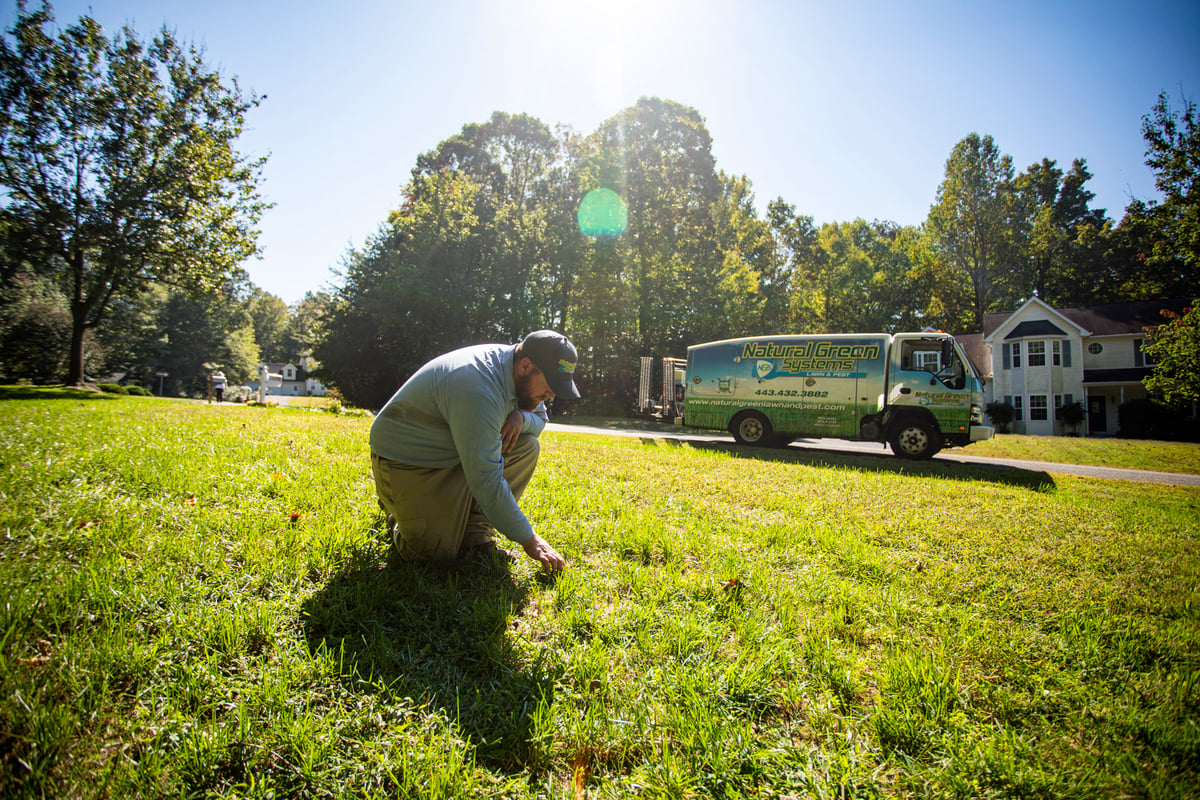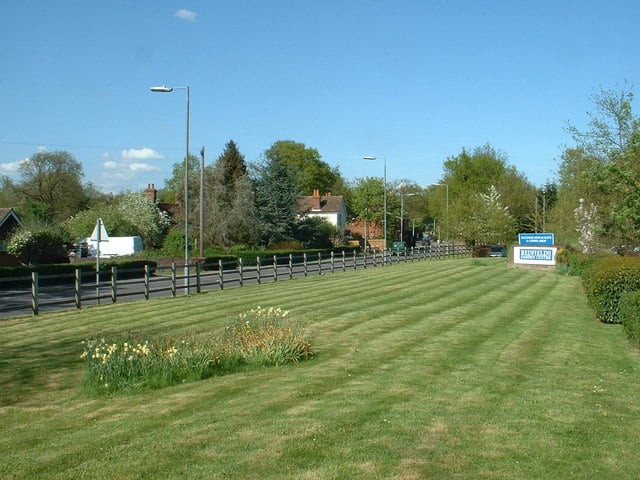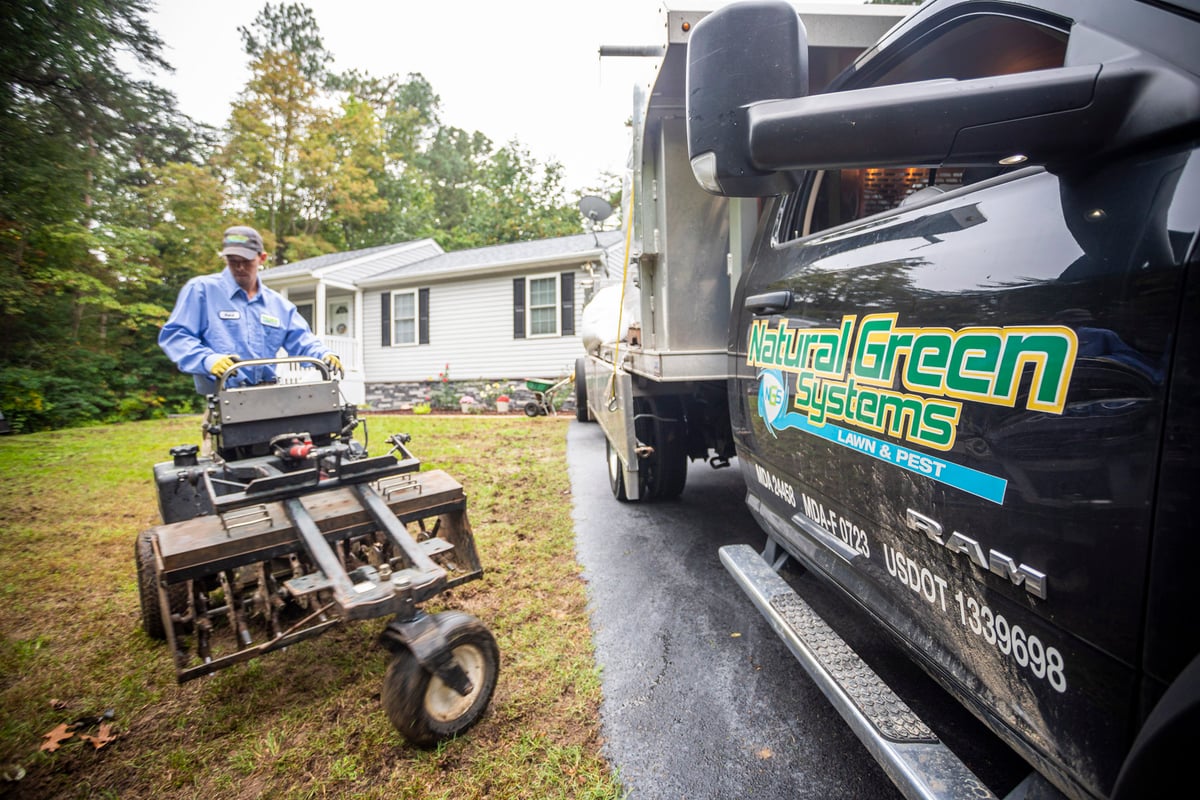What You Need to Know About Chinch Bugs in Maryland
You want a lawn at your Maryland home that calls you outdoors to bask in its brilliant emerald stand. You want to be able to enjoy your lawn when you kick the ball with kids, play fetch with the dog, or even just sink your bare feet into it.
What you don’t want is a lawn that is turning off-colors and being slowly eaten to death by insects.
Bugs can actually be quite sneaky in lawns. They are usually so small that they are feasting on your grass and you don’t even know it until you see the damage. By then, too, it can be harder to control them because they are bigger and stronger from dining on your grass.
One bothersome Maryland lawn pest – the chinch bug – likes to suck the moisture right out of your grass blades, and in large numbers they can be quite destructive.
How can you destroy these pests and get your nice green lawn back? Let’s discuss this pest, what chinch bug lawn damage looks like, and how you can control chinch bugs in Maryland.
A Closer Look at Chinch Bugs In Maryland
What are chinch bugs?
Chinch bugs are tiny, tough-to-see insects that cause lawn damage. This damage is often confused with drought stress.
What do chinch bugs look like? When chinch bugs are young, they look red in color, but turn black as they age. Each adult bug is about ¼-inch long and has a distinctive white “X” on its back.
 Adults overwinter in protected areas like tall grass, thatch in your lawn, or even in yard debris. They reemerge in spring to lay their eggs. In two weeks, females can lay up to 170 eggs each in leaves or on the ground near the base of grass blades. One generation per year is common.
Adults overwinter in protected areas like tall grass, thatch in your lawn, or even in yard debris. They reemerge in spring to lay their eggs. In two weeks, females can lay up to 170 eggs each in leaves or on the ground near the base of grass blades. One generation per year is common.
Chinch bugs have piercing-sucking mouthparts that allow them to extract sap from the grass blades, causing the injury that resembles drought.
What Draws Chinch Bugs to Your Lawn?
These tiny, fast-moving, sucking insects live on your lawn’s soil surface. They like cool-season lawns with compaction and thatch that grow in the sun.
 Chinch bugs in Maryland are most actively feeding on your lawn in July and August.
Chinch bugs in Maryland are most actively feeding on your lawn in July and August.
Use This Tool to Compare Your Local Lawn Care Companies
If you suspect chinch bugs but can’t really see anything, you can try conducting a test with an open-ended coffee can. Stick it about 2 inches into the soil just on the edge of a patch of damaged grass. Fill it with water, looking for adults as they float to the surface. In 5 to 10 minutes, you should be able to see some of these pests. If you don’t have an open-ended can, you can also try removing a core of grass and soil with a shovel and submerging it into a bucket full of water, looking for insects to rise to the top. You may see some nymphs that are red or adults that are darker with whitish wings.
You can also attempt to visually inspect the fringes of the damaged areas of your lawn. Pull back the grass, looking for movement of insects beneath the thatch. Remember, chinch bugs can be pretty tough for the untrained eye to spot.
What Does Chinch Bug Lawn Damage Look Like?
Chinch bugs can cause quite a bit of damage. They inject their piercing and sucking mouthparts into your grass blades and suck out the plant fluids while injecting a toxin that can turn your grass yellow, and then brown. Your grass will eventually die. The first sign of trouble is usually that discoloration in your grass.
 Unfortunately, most people usually assume the problem is something else before realizing it’s chinch bugs, such as drought, a nutrient deficiency, or a lawn disease. As you’re trying to solve those other issues, the chinch bugs continue harming your lawn.
Unfortunately, most people usually assume the problem is something else before realizing it’s chinch bugs, such as drought, a nutrient deficiency, or a lawn disease. As you’re trying to solve those other issues, the chinch bugs continue harming your lawn.
How can you tell the difference between chinch bug lawn damage and other forms of damage? Your best bet is to look for areas of yellowing and browning grass that spread over a few days. Drought won’t spread like this. Also, when you water your lawn, drought stress will go away, while chinch bug damage will not.
Chinch Bug Lawn Treatment in Maryland
For chinch bug lawn treatment, a curative insecticide application applied when the pests are actively feeding can handle current infestations.
A lawn care professional that provides a surface insect control treatment can significantly reduce wide scale chinch bug damage if you catch it early enough.
 Unfortunately, there is no preventive treatment for chinch bugs, but you can help prevent chinch bugs by removing the compaction and thatch in your lawn. Do this with an annual aeration and overseeding service to reduce thatch and compaction, thicken your lawn, and improve soil health. Aeration is the process of using an aerator to pull soil plugs from your lawn to encourage airflow. Overseeding at this time maximizes seed to soil contact to ensure better germination.
Unfortunately, there is no preventive treatment for chinch bugs, but you can help prevent chinch bugs by removing the compaction and thatch in your lawn. Do this with an annual aeration and overseeding service to reduce thatch and compaction, thicken your lawn, and improve soil health. Aeration is the process of using an aerator to pull soil plugs from your lawn to encourage airflow. Overseeding at this time maximizes seed to soil contact to ensure better germination.
Other preventive methods include taking care of your lawn properly so chinch bugs aren’t drawn in. A stressed lawn is one that can attract chinch bugs. This means proper mowing, watering, and fertilization. You’d be surprised how easy it is to keep lawn-damaging pests away with just these basic maintenance tasks as long as they are done correctly.
Want to Get Rid of Chinch Bugs in Central or Southern Maryland? Call Natural Green Systems.
In your Central and Southern Maryland yard, the last thing you want to see are yellowing and brown spots in your lawn.
And you certainly don’t want to find you have an army of tiny insects multiplying and doing damage to your grass.
You have enough to worry about. You don’t need chinch bugs in Maryland taking up all of your time or ruining your plans.
If you want to eliminate chinch bugs, try contacting a lawn care professional for proper diagnosis and treatment. An effective and swift solution could save you time, money, and – most importantly – your lawn’s appearance and health.
Natural Green Systems would love to help! We can create a custom lawn care and insect control plan for you to ensure your lawn thrives.
Want to learn more about how to get a great lawn in Central and Southern Maryland? Get started today with a free quote. We’ll review your options together so you can make a great choice. Then you can just sit back and enjoy your lawn.
Image Source: brown grass, chinch bug
You want a lawn at your Maryland home that calls you outdoors to bask in its brilliant emerald stand. You want to be able to enjoy your lawn when you kick the ball with kids, play fetch with the dog, or even just sink your bare feet into it.
What you don’t want is a lawn that is turning off-colors and being slowly eaten to death by insects.
Bugs can actually be quite sneaky in lawns. They are usually so small that they are feasting on your grass and you don’t even know it until you see the damage. By then, too, it can be harder to control them because they are bigger and stronger from dining on your grass.
One bothersome Maryland lawn pest – the chinch bug – likes to suck the moisture right out of your grass blades, and in large numbers they can be quite destructive.
How can you destroy these pests and get your nice green lawn back? Let’s discuss this pest, what chinch bug lawn damage looks like, and how you can control chinch bugs in Maryland.
A Closer Look at Chinch Bugs In Maryland
What are chinch bugs?
Chinch bugs are tiny, tough-to-see insects that cause lawn damage. This damage is often confused with drought stress.
What do chinch bugs look like? When chinch bugs are young, they look red in color, but turn black as they age. Each adult bug is about ¼-inch long and has a distinctive white “X” on its back.
 Adults overwinter in protected areas like tall grass, thatch in your lawn, or even in yard debris. They reemerge in spring to lay their eggs. In two weeks, females can lay up to 170 eggs each in leaves or on the ground near the base of grass blades. One generation per year is common.
Adults overwinter in protected areas like tall grass, thatch in your lawn, or even in yard debris. They reemerge in spring to lay their eggs. In two weeks, females can lay up to 170 eggs each in leaves or on the ground near the base of grass blades. One generation per year is common.
Chinch bugs have piercing-sucking mouthparts that allow them to extract sap from the grass blades, causing the injury that resembles drought.
What Draws Chinch Bugs to Your Lawn?
These tiny, fast-moving, sucking insects live on your lawn’s soil surface. They like cool-season lawns with compaction and thatch that grow in the sun.
 Chinch bugs in Maryland are most actively feeding on your lawn in July and August.
Chinch bugs in Maryland are most actively feeding on your lawn in July and August.
Use This Tool to Compare Your Local Lawn Care Companies
If you suspect chinch bugs but can’t really see anything, you can try conducting a test with an open-ended coffee can. Stick it about 2 inches into the soil just on the edge of a patch of damaged grass. Fill it with water, looking for adults as they float to the surface. In 5 to 10 minutes, you should be able to see some of these pests. If you don’t have an open-ended can, you can also try removing a core of grass and soil with a shovel and submerging it into a bucket full of water, looking for insects to rise to the top. You may see some nymphs that are red or adults that are darker with whitish wings.
You can also attempt to visually inspect the fringes of the damaged areas of your lawn. Pull back the grass, looking for movement of insects beneath the thatch. Remember, chinch bugs can be pretty tough for the untrained eye to spot.
What Does Chinch Bug Lawn Damage Look Like?
Chinch bugs can cause quite a bit of damage. They inject their piercing and sucking mouthparts into your grass blades and suck out the plant fluids while injecting a toxin that can turn your grass yellow, and then brown. Your grass will eventually die. The first sign of trouble is usually that discoloration in your grass.
 Unfortunately, most people usually assume the problem is something else before realizing it’s chinch bugs, such as drought, a nutrient deficiency, or a lawn disease. As you’re trying to solve those other issues, the chinch bugs continue harming your lawn.
Unfortunately, most people usually assume the problem is something else before realizing it’s chinch bugs, such as drought, a nutrient deficiency, or a lawn disease. As you’re trying to solve those other issues, the chinch bugs continue harming your lawn.
How can you tell the difference between chinch bug lawn damage and other forms of damage? Your best bet is to look for areas of yellowing and browning grass that spread over a few days. Drought won’t spread like this. Also, when you water your lawn, drought stress will go away, while chinch bug damage will not.
Chinch Bug Lawn Treatment in Maryland
For chinch bug lawn treatment, a curative insecticide application applied when the pests are actively feeding can handle current infestations.
A lawn care professional that provides a surface insect control treatment can significantly reduce wide scale chinch bug damage if you catch it early enough.
 Unfortunately, there is no preventive treatment for chinch bugs, but you can help prevent chinch bugs by removing the compaction and thatch in your lawn. Do this with an annual aeration and overseeding service to reduce thatch and compaction, thicken your lawn, and improve soil health. Aeration is the process of using an aerator to pull soil plugs from your lawn to encourage airflow. Overseeding at this time maximizes seed to soil contact to ensure better germination.
Unfortunately, there is no preventive treatment for chinch bugs, but you can help prevent chinch bugs by removing the compaction and thatch in your lawn. Do this with an annual aeration and overseeding service to reduce thatch and compaction, thicken your lawn, and improve soil health. Aeration is the process of using an aerator to pull soil plugs from your lawn to encourage airflow. Overseeding at this time maximizes seed to soil contact to ensure better germination.
Other preventive methods include taking care of your lawn properly so chinch bugs aren’t drawn in. A stressed lawn is one that can attract chinch bugs. This means proper mowing, watering, and fertilization. You’d be surprised how easy it is to keep lawn-damaging pests away with just these basic maintenance tasks as long as they are done correctly.
Want to Get Rid of Chinch Bugs in Central or Southern Maryland? Call Natural Green Systems.
In your Central and Southern Maryland yard, the last thing you want to see are yellowing and brown spots in your lawn.
And you certainly don’t want to find you have an army of tiny insects multiplying and doing damage to your grass.
You have enough to worry about. You don’t need chinch bugs in Maryland taking up all of your time or ruining your plans.
If you want to eliminate chinch bugs, try contacting a lawn care professional for proper diagnosis and treatment. An effective and swift solution could save you time, money, and – most importantly – your lawn’s appearance and health.
Natural Green Systems would love to help! We can create a custom lawn care and insect control plan for you to ensure your lawn thrives.
Want to learn more about how to get a great lawn in Central and Southern Maryland? Get started today with a free quote. We’ll review your options together so you can make a great choice. Then you can just sit back and enjoy your lawn.
Image Source: brown grass, chinch bug
Share This
Topics: Lawn Care


